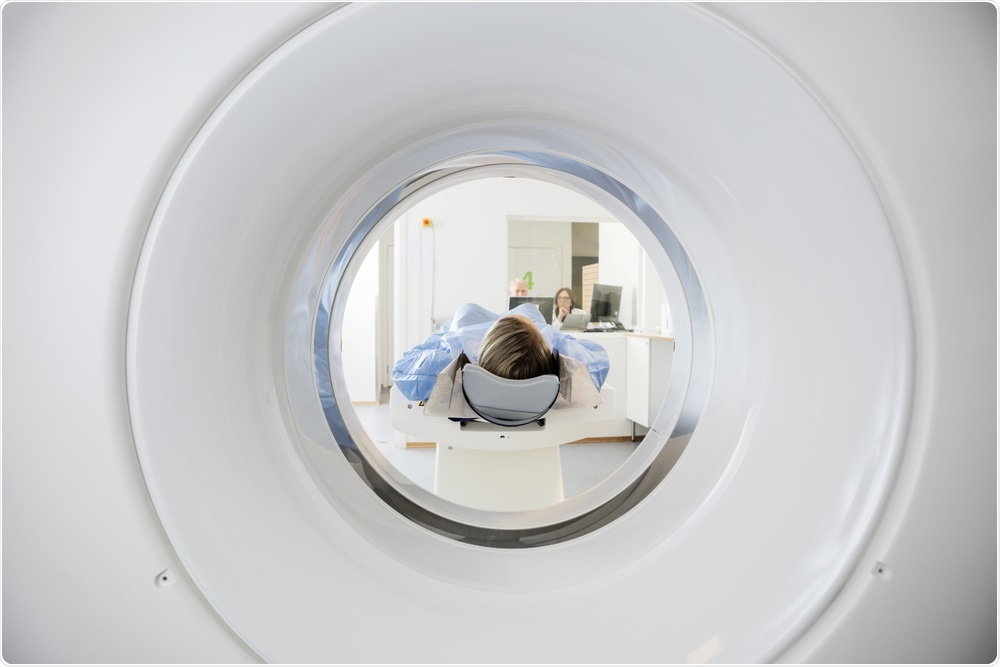A new CT (computed tomography) scan method can reduce radiation dose by splitting a full C-ray beam into thin and small beamlets.

Image Credit: Tyler Olson/Shutterstock.com
A team of researchers at the University College London (UCL) demonstrated that the new technique can provide the same quality image but with lower radiation doses.
Published in the journal Physical Review Applied, the study highlights a promising new method that will make imaging better, more accurate, but with lesser risks to the patient’s health.
What is a computed tomography (CT) scan?
A computed tomography (CT) scan of the body uses sophisticated X-ray technology to help detect a wide range of diseases and conditions. The method uses computers and rotating X-ray machines to generate cross-sectional images of the body.
The images are produced to give more detailed information than conventional X-ray machines and can show the soft tissues, bones and blood vessels in different parts of the body. The procedure provides accurate images of the shoulders, head, spine, heart, abdomen, chest and knee.
It is one of the fastest and most reliable tools for examining many body parts, such as the pelvis, abdominal area, and chest, since it provides cross-sectional views of all tissue types. It can be used to detect cancer or tumors and examine patients with injuries from trauma from vehicular accidents, among others.
It can also provide detailed images to detect and diagnose vascular diseases, which can lead to complications if they are not treated immediately. These include heart disease, stroke, and kidney failure. The imaging technique may also assess aortic aneurysms and pulmonary embolism, which are potentially fatal conditions that need urgent detection and treatment.
Though convenient and less invasive, previous studies have tied CT scans to a small increase in lifelong cancer risk due to the presence of high-energy wavelengths that can damage the DNA in cells. Even though cells can repair this type of damage, some repairs may not be perfect and can trigger DNA mutations in the future. As a result, it can lead to cancer cell formation.
The new CT scan method
In the new method, the researchers used a mask with small slits over an X-ray beam, breaking it up into thinner ones called beamlets. The team then transferred the object being sampled in a cycloidal motion to make sure the entire object was irradiated quickly, wherein no parts were missed.
The team then compared the novel method to traditional CT scanning methods, wherein the item rotates as a full beam is directed to it. They found that the new method that delivers lesser doses of radiation produced the same quality of the image.
“Being able to reduce the dose of a CT scan is a long-sought goal. Our technique opens new possibilities for medical research and we believe that it can be adjusted for use in medical scanners, helping to reduce a key source of radiation for people in many countries,” Dr. Charlotte Hagen, first author of the paper and a member of the UCL Advanced X-Ray Imaging Group, said.
Study implications
With lesser doses of radiation, the new method can help reduce the risk of cancer development tied to CT scanning methods. Conventional CT scans involve an X-ray beam that is rotated around the patient, with high doses of radiation exposure. On the other hand, the new cycloidal method combines the rotation with both backward and forward motion, with the use of beamlets.
The team believes that reducing the amount of radiation exposure during CT scans can help create a new method that is safer for patients.
This new method fixes two problems. It can be used to reduce the dose, but if deployed at the same dose it can increase the resolution of the image. This means that the sharpness of the image can be easily adjusted using masks with different-sized apertures, allowing greater flexibility and freeing the resolution from the constraints of the scanner's hardware,”
Professor Sandro Olivo
The new method can be adapted for medical scanners to reduce the amount of radiation among millions of people getting CT scans each year.
In England, there were about 42.1 million imaging tests performed as of March 2017. Of these, 4.82 million were CT scans, making it the third most common imaging technique.